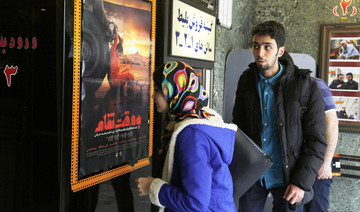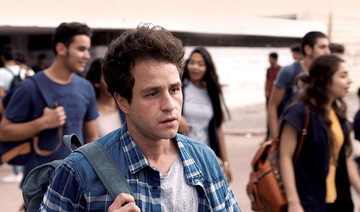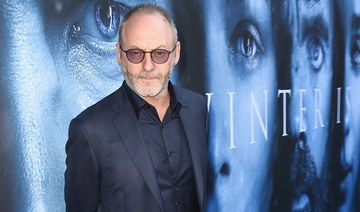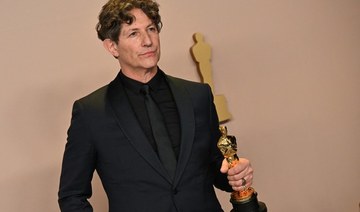DUBAI: Regional filmmakers, producers, actors and cinema enthusiasts gathered in the Egyptian town of El Gouna this week to watch a diverse selection of films from the Arab world and embrace the cultural exchange it offers.
Already known for discovering new voices and being a catalyst for the development of cinema in the region, the second edition of the El Gouna Film Festival (GFF), held on the shores of the Red Sea under the auspices of the Ministries of Culture and Tourism, opened on Sept. 20 and continued until the 28th.
“Eyebrows,” a short feature film by Tamer Ashry, a 34-year-old-Egyptian filmmaker, was screened in the Official Competition category. It tells the story of a young woman who struggles with the conflict between her personal need to feel beautiful and extreme religious views.
“The woman’s basic need is to pluck her eyebrows,” Ashry told Arab News. “She has a human need to feel more accepted and, although it’s not against Islam, there are some extreme views (and some) believe it is forbidden. So this sheds light on extreme religion and her struggle between what she believes in and her needs.”
This year the festival was a day longer than the inaugural edition, with more films showing and more than double the number of applications to the event’s industry hub, the CineGouna Platform.
“The filmmaking industry in the Arab world has become more and more mature in the past five to seven years,” said Ashry. “When you go to Europe or anywhere else, they look for Arab films because they can see that films coming from here deal with different topics that are more interesting and relevant. The subjects reflect what is happening in the Arab world and that gives the whole movement more of a push and motivation to work more and make more films.”
Filmmakers from Iraq, Morocco, Tunisia, Saudi Arabia, Palestine and Egypt mingled at the event, which offers them a vital platform in the region after the demise of the Abu Dhabi Film Festival, and the announcement by the Dubai Film Festival that it is taking a break this year and will be held every two years in the future.
“Gouna brings to the Arab world this kind of international look to our films,” said Ashry. “It’s a week of meeting lots of people, making connections, having opportunities to watch other films and gaining experience. It’s really interesting for Arab filmmakers and producers to see the opportunities we can bring to elevate our films to the international level.”
The festival program included 15 films in the Feature Narrative Competition, 12 in the Feature Documentary Competition and 23 in the Short Film Competition. In addition, five films screened in a special retrospectives program and 25 out of competition, bringing the total to 80 — 10 more than in the first edition of the festival.
CineGouna Platform, the event’s industry arm, which offers delegates from around the world the chance to connect and share expertise, represents an important opportunity to support Arab filmmakers. It also provides regional projects with artistic and financial support to help nurture Arab film.
“The festival has already set a benchmark to all festivals in the region, although it’s only in its second edition,” said Yara El-Ashry, a CineGouna Platform assistant. “We’re strengthening our position worldwide as film supporters and, most importantly, humanity supporters.”
She said the festival’s theme of “Cinema for Humanity” speaks for itself, as GFF focuses on expressing issues that might not be expressed elsewhere.
“It also operates with international standards, even in the finest details, which will help it grow big time in a very short time,” she added. “The CineGouna Platform consists of CineGouna Bridge, which has masterclasses, panels and workshops, in addition to SpringBoard, which is a competition for projects in development and films in post-production.”
The festival has received a lot of exposure internationally, helping to introduce Arab cinema to audiences around the world.
“When international celebrities and filmmakers are here to see what we have, they’ll go and talk about it abroad,” said El-Ashry. “We need that since the image of Arabs in general is usually not correctly conveyed. We need to push Arab films to show the true sense of art we have everywhere.”
Marco Orsini, president of the International Emerging Film Talent Association (IAFTA), which is one of the festival’s sponsors, said the GFF is crucial to creating a nucleus around which filmmakers in the region can meet and discuss the art of making movies.
“There has previously been in Abu Dhabi and Dubai some sort of central location where international filmmakers can come in and explore Arab cinema but El Gouna has taken it to the next level,” he said.
IAFTA’s mission, he explained, is to engage in the art of cinema by exploring and finding new and emerging filmmakers to take part in other film festivals around the world.
“Last year we participated in the festival and brought a Palestinian and Egyptian filmmaker to the Marche du Film in Cannes (Cannes Film Market),” he said. “This year, we’re hoping to bring another filmmaker to this year’s Cannes Film Festival.”
Orsini, who is also a film director, said all film festivals help to advance the industry by providing a forum for engaging in discussions about the art of film.
“They’re vital because it’s important for filmmakers to have a space where they can think freely,” he said. “It’s important for film festival directors to come and be able to engage with filmmakers and track them, and film enthusiasts to come and interact with movie stars, directors, writers and people they follow because of the films that they make.”
He added that the unique culture of the Arab world is reflected in the films that are made here.
“The styles of filmmaking and how people tell stories are different,” he said. “Those stories are important and it’s important to tell them from a different perspective. Films representing a country are ambassadors for the people, the culture, the food, the religion, and this is what makes film so important — it’s a cultural exchange program.”
Still standing: Why El Gouna is vital for Arab filmmakers
Still standing: Why El Gouna is vital for Arab filmmakers
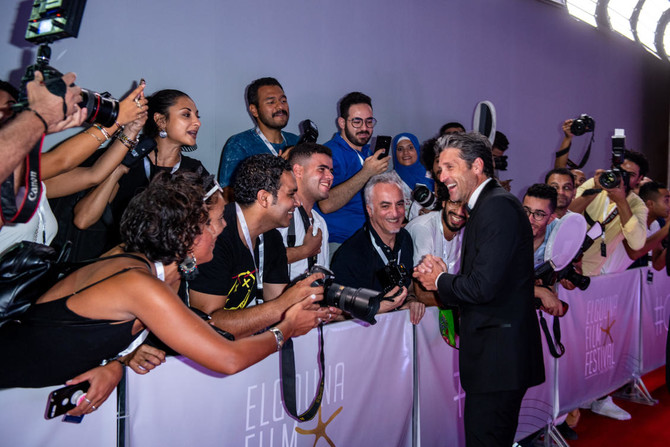
- Regional filmmakers, producers, actors and cinema enthusiasts gathered in El Gouna over the past week
- In total 80 movies were screened during the festival
Heba Ismail brings Saudi representation to NFT ecosystem
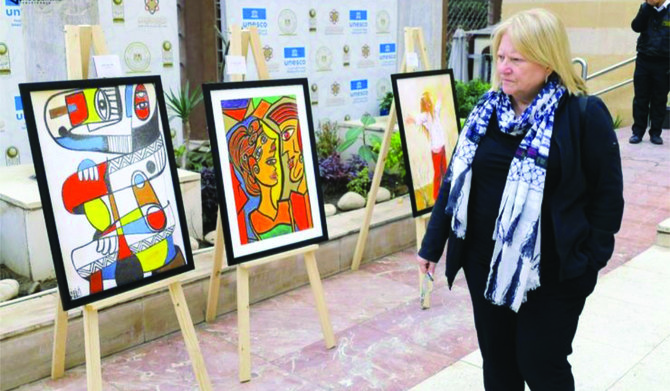
- Heba Ismail is highlighting ways for artists to flourish in the digital world
JEDDAH: Saudi artist Heba Ismail showcased her work at the Outer Edge Innovation Summit in Riyadh this week.
Commenting on her experience at the summit as one of the first Saudi artists to venture into the Web3 art scene, she said: “Having my paintings displayed on the event screens is a tremendous honor, offering global visibility and inspiring more Saudi and Arab artists to explore the diverse options available for sharing their art with the world.
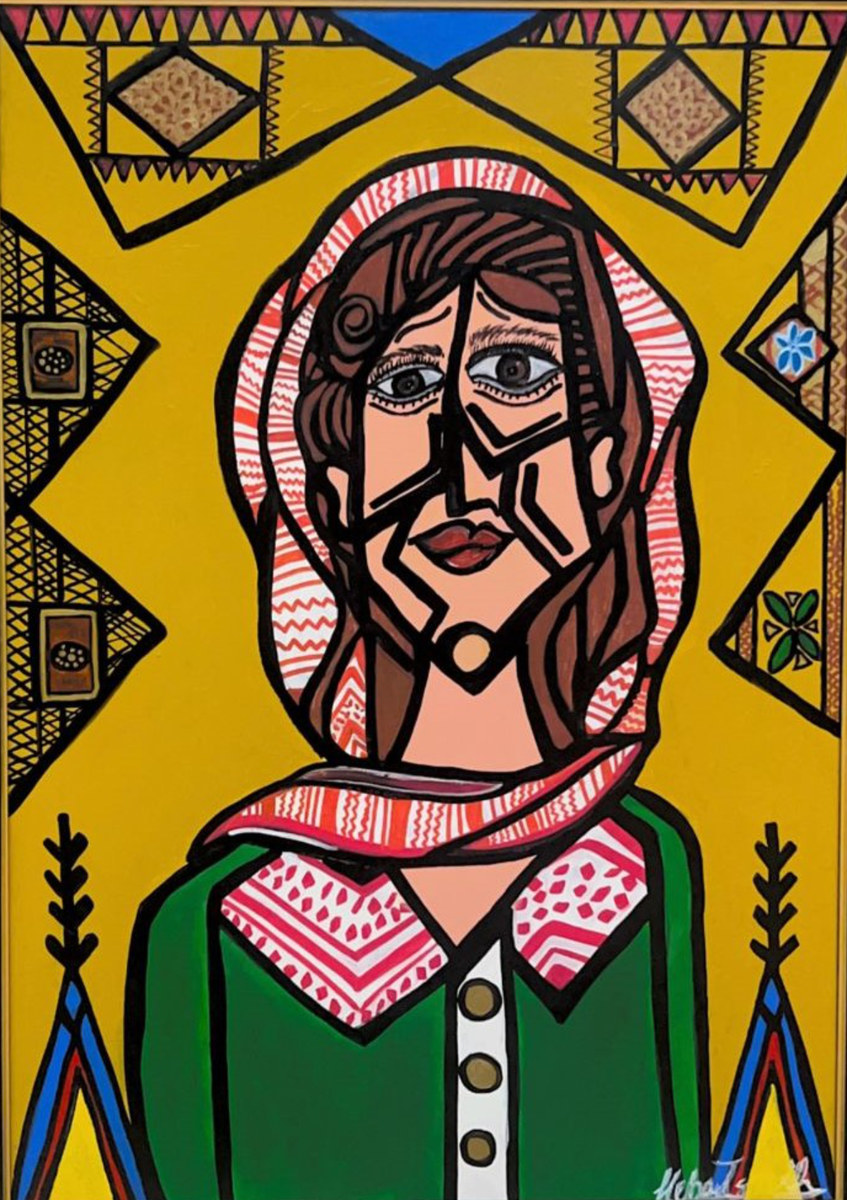
“Through my participation with Nuqtah, the first Saudi NFT platform, I am eager to present my art on a global stage and connect with audiences in innovative ways,” she continued.
Non-fungible tokens — or NFTs — are, in this scenario, digital tokens that can be redeemed for a digital art work. Ismail is exploring their potential in the Saudi art scene.
HIGHLIGHTS
• With a professional background in dentistry, Heba Ismail found parallels between that meticulous work and her own creative process.
• Partnering with ChainVisory, a blockchain consultancy company, Ismail launched the Hebaism brand.
• It combines NFTs and original paintings, providing collectors with both digital and physical assets.
For Ismail, art has always been more than just a hobby — it’s been a lifelong calling. With a professional background in dentistry, Ismail found parallels between that meticulous work and her own creative process.
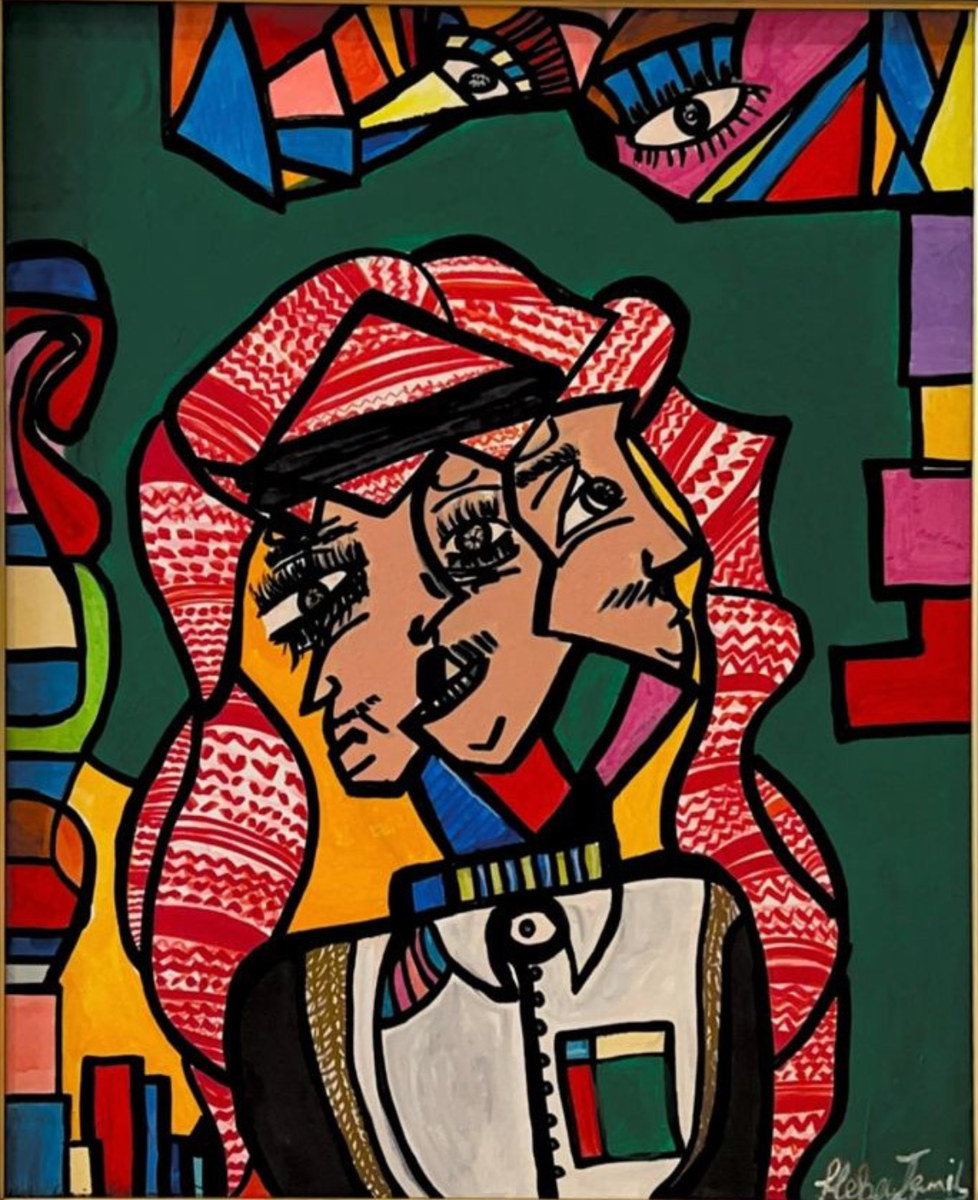
Inspired by movements including cubism, fauvism, and surrealism, Ismail’s art is a fusion of diverse influences and personal narratives “Each face represents a feeling and a vision documented on a painting. I paint poetry, and often times each piece is accompanied by a poem,” she said. “As a Saudi female, most of my paintings represent myself and my Saudi culture, which I am proud of. The characters are coded feelings, faces that tell a story — either joy, sadness, or acrimony.”

Her introduction to NFTs came in 2021, sparking a fascination with the technology and its potential. Partnering with ChainVisory, a blockchain consultancy company, Ismail launched her Hebaism brand, which combines NFTs and original paintings, providing collectors with both digital and physical assets.
As a female Saudi artist, I want to leave a mark and impact on every art platform, putting Saudi art on the map worldwide.
Heba Ismail, Saudi artist
“I wanted to keep the authentic classical painting process, yet the NFT world gave me a chance to meet and discover different ways to share my art and build a name and a brand,” she said. “It’s been an enlightening journey, uncovering the futuristic art process and connecting with a vibrant community through Web3.”
Ismail hopes to inspire other artists in the region to explore new avenues for artistic expression.
“As a female Saudi artist, I want to leave a mark and impact on every art platform, putting Saudi art on the map worldwide,” she said.
‘Bridgerton’ actress says she was warned not to campaign for Palestinians
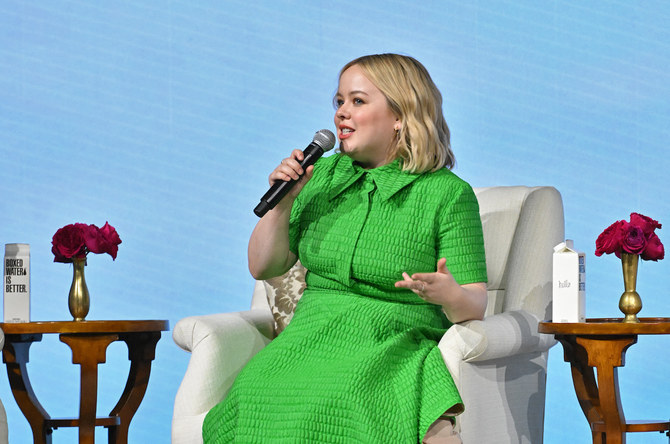
- Nicola Coughlan: Hollywood insiders told her advocacy could harm her career
- Irish star feels ‘moral responsibility’ to campaign for ceasefire, continue to fundraise
LONDON: Irish actress Nicola Coughlan has revealed that she was told her Palestinian advocacy could harm her career.
The “Bridgerton” and “Derry Girls” star told Teen Vogue she had been warned by people in Hollywood not to be openly supportive of Palestinian rights, but has continued to campaign for a ceasefire in Gaza and still publicly wears an Artists4Ceasefire pin.
“You do get told, ‘you won’t get work, you won’t do this,’ but I also think, deep down, if you know that you’re coming from a place of ‘I don’t want any innocent people to suffer,’ then I’m not worried about people’s reactions,” she said.
“My family lived in Jerusalem back in the late ‘70s, early ’80s, before I was born, so I heard first hand stories about them living there.”
She said her father, who served in the Irish military, went to a “lot of war-torn regions after the conflict and try and help rebuild,” and this had left a profound impression on her.
“I’m so lucky I’ve gotten to this point in my career, and I’m privileged as a white woman, first off.
“Then the fact that I get to do the job I love and travel the world and meet amazing people, I feel a moral responsibility to give back.”
She has made a point of continuing to campaign and raise money around the issue, adding: “To me, it always becomes about supporting all innocent people, which sounds oversimplified, but I think you’ve got to look at situations and just think, ‘Are we supporting innocent people no matter where they’re from, who they are?’ That’s my drive.”
Coughlan said social media plays a role in driving advocacy but it requires nuance. “More of us should be trying to understand how upsetting and traumatising this is for Jewish people, and how horrific it is that all these innocent people in Palestine are being murdered,” she added.
A number of Hollywood figures have faced repercussions for their open support of the Palestinians or criticism of Israel.
Mexican actress Melissa Barrera was fired from the latest “Scream” film over social media posts in support of Palestine, while director Jonathan Glazer caused controversy for using his acceptance speech at the Oscars for his film “The Zone of Interest” to criticize the Gaza war.
Saudi Film ‘Hajjan’ wins 6 nominations at Critics Awards for Arab Films
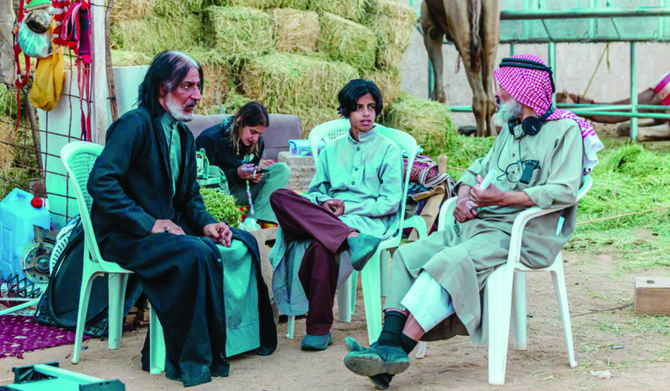
DUBAI: Saudi Arabia-based film “Hajjan,” directed by Egyptian filmmaker Abu Bakr Shawky, is nominated for six categories at the eighth Critics Awards for Arab Films.
The movie is competing in the best feature film, best screenplay, best actor, best music, best cinematography and best editing categories.
“Hajjan” tells the story of Matar, a boy who embarks on a journey across the desert with his camel, Hofira.
The movie is a co-production between the Kingdom’s King Abdulaziz Center for World Culture, or Ithra, and Egyptian producer Mohamed Hefzy’s Film Clinic.
The movie, which is written by Omar Shama from Egypt and the Kingdom’s Mufarrij Almajfel, stars Saudi actors Abdulmohsen Al-Nemer, Ibrahim Al-Hsawi, among others.
The awards ceremony, scheduled for May 18 on the sidelines of the Cannes Film Festival, is organized by the Arab Cinema Center in Cairo and assessed by a panel of 209 critics representing 72 countries.
Sudanese director Mohamed Kordofani’s inaugural feature film, “Goodbye Julia,” and Tunisian filmmaker Kaouther Ben Hania’s Oscar-nominated documentary, “Four Daughters,” scored nominations in seven categories.
Jordanian filmmaker Amjad Al-Rasheed’s “Inshallah A Boy” and Palestinian-British director Farah Nabulsi’s “The Teacher” have six nominations.
REVIEW: Sofia Boutella’s heroic efforts can’t save ‘Rebel Moon — Part Two’
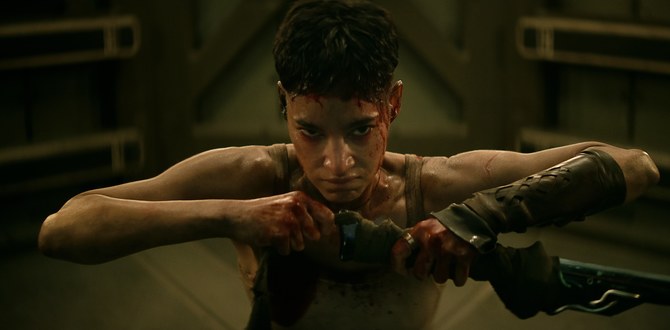
DUBAI: “Rebel Moon — Part One: A Child of Fire” drew scathing reviews (our writer described it as perhaps “the most discombobulating collection of mismatched sci-fi tropes ever committed to film”). “Part Two: The Scargiver” simply adds to that legacy.
The story: Former Imperium soldier Kora and the surviving band of ragtag warriors she’s recruited return to the moon of Veldt — home to simple farming folk in danger of being blown to bits by the mighty Imperium for failing to supply the unreasonable grain quota demanded of them. With just a few days before the deadline, Kora and her band must train the villagers to fight (and harvest the grain in just three days to provide a bargaining chip). What Kora doesn’t know is that Admiral Noble, the bad guy she ‘killed,’ is still alive. And bent on vengeance.
Before the enemy arrives, the warriors tell their life stories in a trust-building exercise — one of the clunkiest pieces of exposition ever written. There are slow-mo shots of the harvest gathering and a brief interlude to show that Kora and farmer Gunnar are very much in love.
Then, thankfully, we’re into the battle(s). Here, at least, director Zack Snyder doesn’t disappoint, even giving an original twist to the ‘spaceship plummeting from the sky’ trope by staging a showdown between Kora, Gunnar and Admiral Noble on a floor that becomes increasingly vertical. Below them, the villagers fight heroically against odds very much stacked against them, even with the help of Nemesis and her two flaming definitely-not-lightsabers.
The well-constructed battle scenes, though, aren’t enough. Not even with a cast fighting as heroically as the villagers to salvage something. Sofia Boutella, as Kora, emerges with most credit, proving herself a convincing action hero who deserves better than this material to work with (spoiler alert: perhaps even material that allows the heroine to kill the bad guy herself, without the intervention of her boyfriend).
Yes, no one’s sitting down to watch an “epic space opera” in the expectation of thought-provoking dialogue, but “Rebel Moon” is like the result of forcing a seven-year-old to watch all things “Star Wars” and “Star Trek” in random order, then asking them to write down what happened. The best thing to say about “The Scargiver” is that it finishes — but even that comfort is tainted by Snyder’s cynical setting up of a potential part three. Possibly because that seven-year-old fell asleep before writing an actual ending.
Saudi Arabian history on display at Abu Dhabi Book Fair
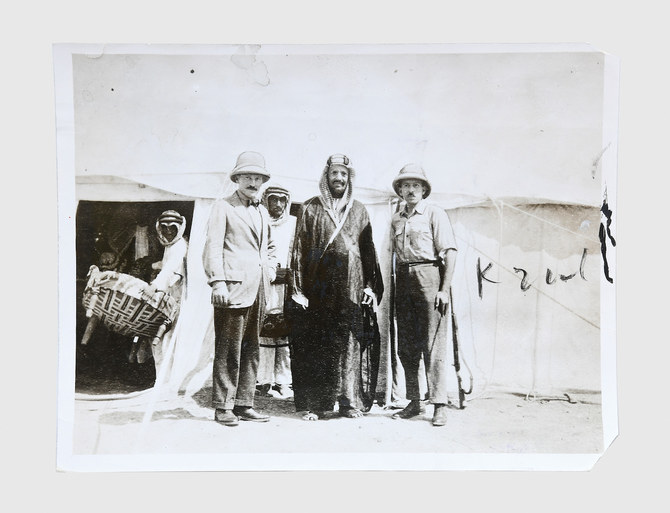
- Selections from London-based rare-book dealer Peter Harrington’s offering at the UAE fair
‘Ibn Saud press photograph’

According to notes from rare books specialists from Peter Harrington’s team, this image from archives of The Times newspaper was taken in what was then called Hejaz, following a “critical and secretive meeting between (founder of Saudi Arabia) Ibn Saud (center) and the British representative Sir Gilbert Clayton (left) — one of a pivotal series of negotiations which led to the Treaty of Jeddah in May 1927.” The two discussed “various outstanding questions affecting the relations of the Kingdom of the Hejaz and Nejd with the neighboring states of Iraq and Transjordan” to help determine the northern borders of Saudi Arabia. “Discussions over the borders were protracted and complex, with the towns of Maʿan and Kaf the object of particularly intense debate,” the notes state.
‘Pilgrimage to El-Medinah and Mecca’ by Richard F. Burton
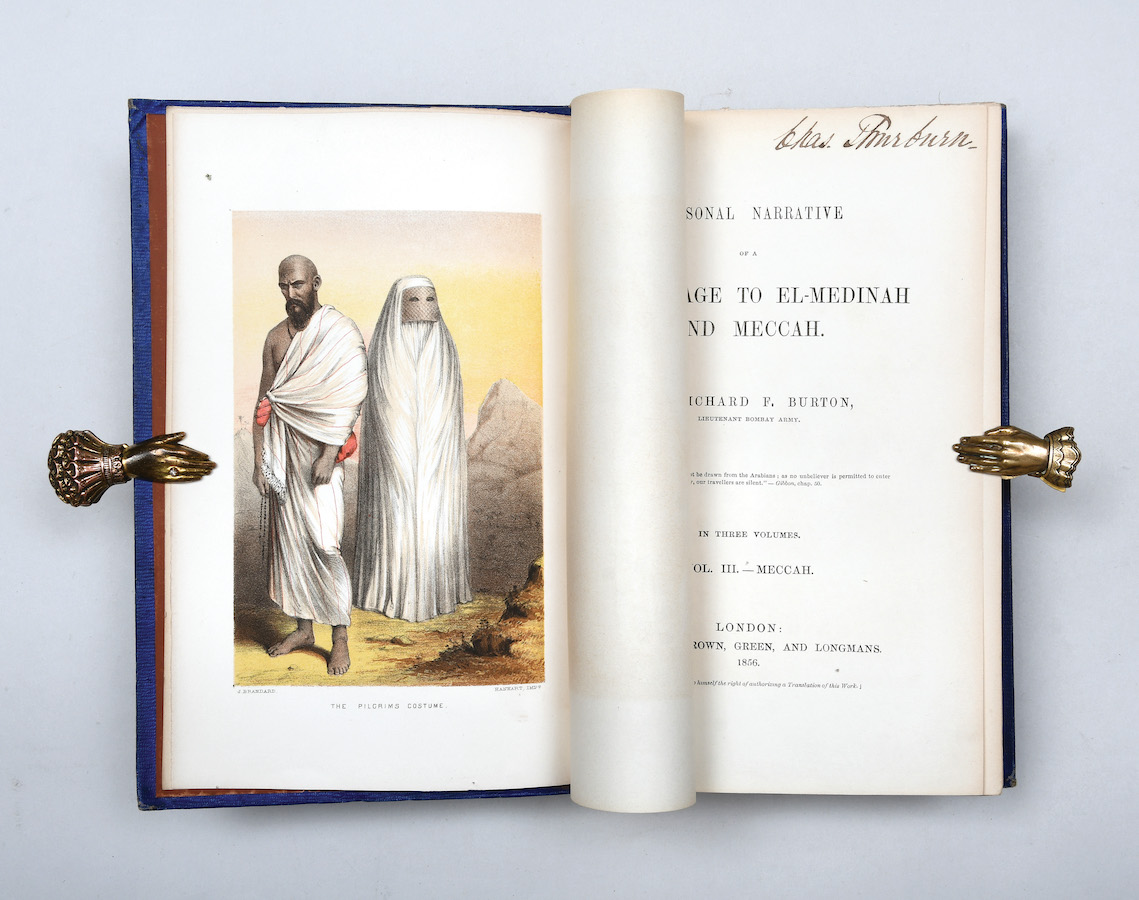
In this three-volume first edition, complete with illustrations, of “one of the most extraordinary travel narratives of the 19th century,” the British explorer, writer and polyglot Richard Francis Burton recounts his Hajj journey, made “in complete disguise as a Muslim native of the Middle East” at a time when fewer than half-a-dozen Europeans had made the pilgrimage — forbidden to non-Muslims. “It surpassed all preceding Western accounts of the holy cities of Islam, made Burton famous, and became a classic of travel literature, described by T. E. Lawrence as ‘a most remarkable work of the highest value,’” the team from Peter Harrington note. In Makkah, Burton performed all the rites of the pilgrimage and his subterfuge remained undiscovered.
‘Map and Overview Presenting the Hejaz Railway Route’

This map from 1903 depicts the route of the ambitious Hejaz Railway project. It “depicts a very broad area, extending from just north of Hama, Syria, all the way south a little way past Makkah, in the Hejaz; it covers most of Syria, all of Palestine, the Sinai Peninsula, the Suez Canal, and all the north-western Arabian Peninsula,” Peter Harrington’s rare book experts write. “It clearly delineates those parts of the railway that are in place and those under construction … with each station labelled. Additionally, it depicts the two alternative routes proposed for extending the line to Makkah, employing broken lines, while another line traces the proposed (but unrealized) route of a rail line from Makkah to Jeddah. The map also labels important roads and caravan routes.”
Four years after this map was published, the book seller’s notes state, the railway reached AlUla, which is not marked on this map, although Mada’in Salah (now Hegra) is, which today is the site of one of two museums dedicated to the Hejaz Railway.
By 1908, the railway had reached Madinah, where, the notes state, “for various political reasons, it had to be terminated.” Nevertheless, they continue, “until the outbreak of the First World War, it allowed hundreds of thousands of pilgrims to make the Hajj in safety and with relative ease.”
‘Material from the library of Peter O’Toole by T.E. Lawrence’
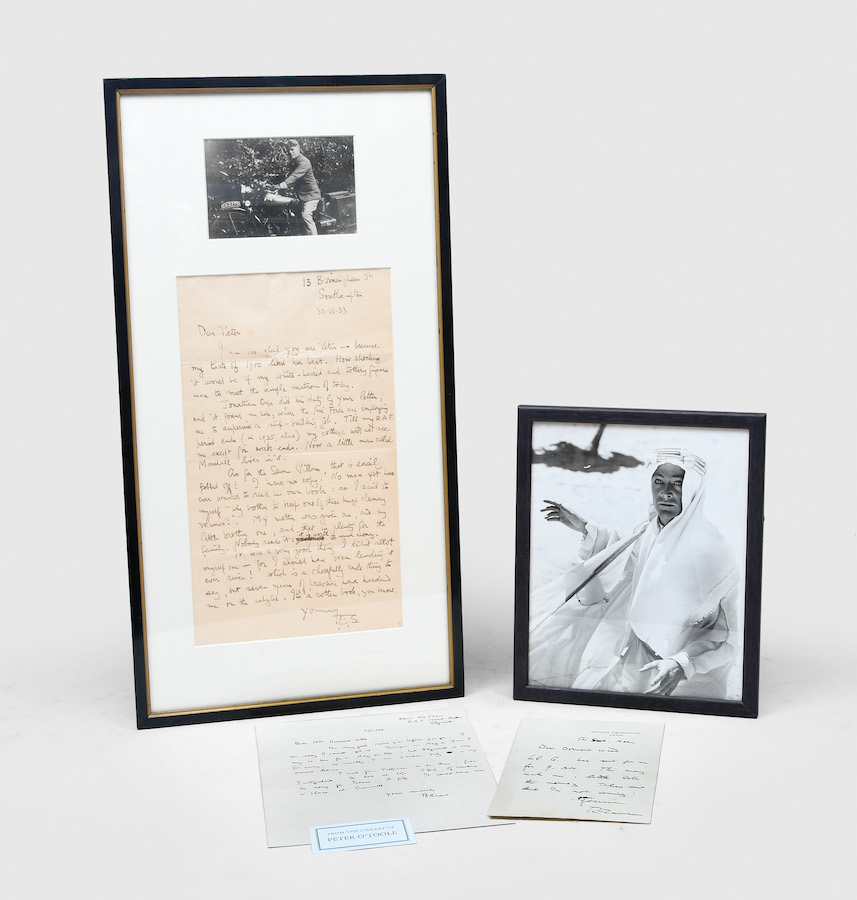
Billed by Peter Harrington as an “insightful archive, spanning Lawrence’s transformation from man of the moment to unwilling celebrity, from the library of Peter O’Toole, whose breakthrough portrayal in David Lean’s 1962 biopic still shapes perceptions of the famous Arabist. Autograph material from Lawrence is always highly prized, but rarely is its provenance so apposite.”
The centerpiece of the material is a photograph and an unpublished letter written by Lawrence (who became known as Lawrence of Arabia following his journeys across the Middle East, including modern-day Saudi Arabia), framed as a piece and gifted to the English actor who played Lawrence in the aforementioned biopic by his wife, Sian, and a friend not long before the premiere of the movie. The letter makes clear Lawrence’s difficult relationship with his celebrity, and is cutting about his own book, “The Seven Pillars of Wisdom,” saying that he did not own a copy himself (“No man yet has ever wanted to read his own book”) but that his mother and “little brother” did, “and that is plenty for the family. Nobody reads it: it is worth too much money. ... It is a rotten book, you know.”
‘Oil Region in the Desert of Saudi Arabia’
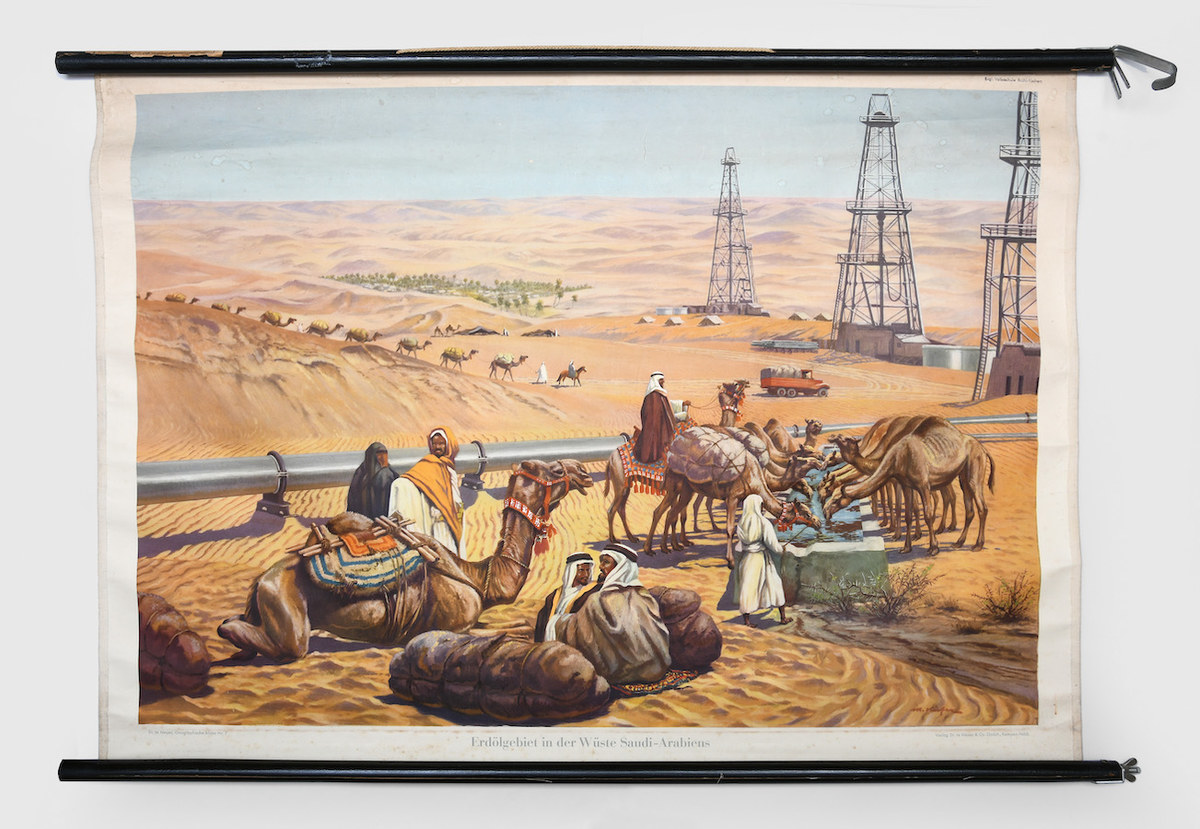
This 1950 image, “after a painting by the German artist Michael Mathias Kiefer,” is one of a series of geographical pictures intended for use in the curriculum of German schools. “The painting juxtaposes Arab figures in traditional garb with images of drilling rigs, a lorry, and oil storage tanks, creating a strikingly orientalist image,” Peter Harrington’s notes state. “In the middle of the composition, a pipeline bisects the image, a forceful reminder of the centrality of oil to the modern Saudi Arabian economy. In the foreground, members of a group of travelers, possibly intended to be Bedouins, rest on a carpet and let their camels drink from a water tank. Away in the background, before a distant oasis, more travelers arrive at a campsite, their camels heavily laden. Their destination is the oil infrastructure that crowds the right of the image.”


